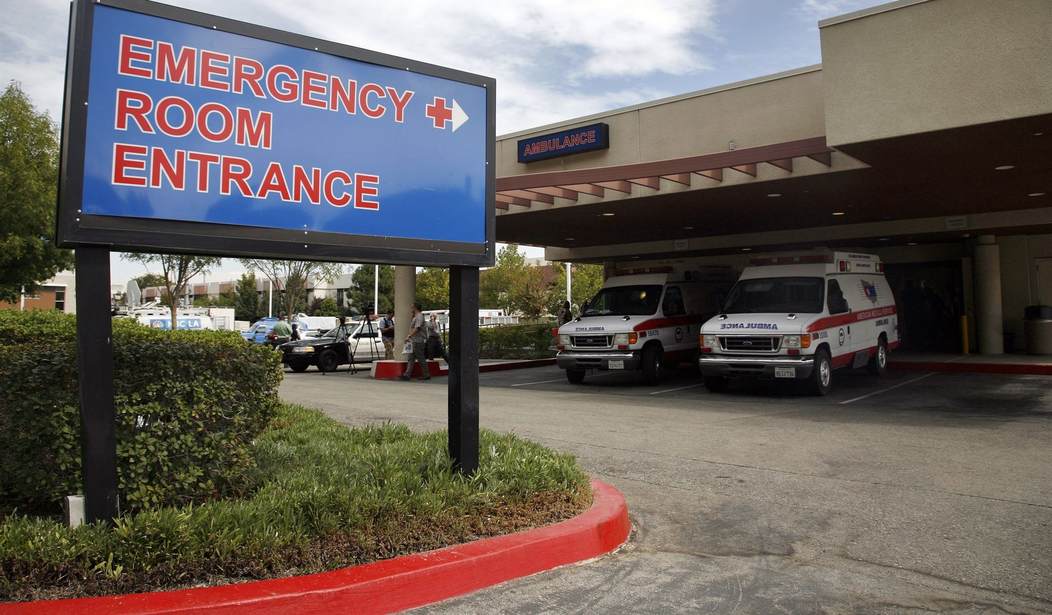The good news from the New York Times: Yet another study strongly suggests that the Omicron variant of COVID-19 causes much milder impact on health than previous variants. The middling news: It’s not altogether benign either, which matters when we get to the bad-ish news in a moment.
Still, the good news is pretty darned good:
A new study of nearly 70,000 Covid patients in California demonstrates that Omicron causes less severe disease than other coronavirus variants, results that align with similar findings from South Africa, Britain and Denmark, as well as a host of experiments on animals.
Compared with Delta, Omicron infections were half as likely to send people to the hospital. Out of more than 52,000 Omicron patients identified from electronic medical records of Kaiser Permanente of Southern California, a large health system, the researchers found that not a single patient went on a ventilator during that time.
“It’s truly a viral factor that accounts for reduced severity,” said Dr. Lewnard, an epidemiologist at the University of California, Berkeley who was an author of the study, which was posted online on Tuesday and has not yet been published in a scientific journal. …
Compared with Delta, Omicron cut the risk of hospitalization in half, the study found, and the people who came to the hospital with Omicron stayed for a shorter period. The variant cut hospital stays by more than three days, a reduction of 70 percent compared with Delta.
What makes this study more useful than some other data coming from the CDC is the controls placed on the research. The study attempted, as best as possible, to eliminate correlative cases of COVID-19 and focused only on causative hospitalizations and symptomatic cases. The study ran for 33 days from November 30 to January 2nd, during which time the Omicron variant began to dominate in the US. By the end of the study, three-quarters of all its subjects had tested positive for Omicron over that six-week period, which strongly aligns with the CDC’s genomic surveillance data, updated this morning:

If anything, this study in California might suggest that the curve for Omicron started earlier and ramped up faster than this CDC data suggests. If that’s the case, then the impact of its crowd-out of Delta would result in lower impact on hospital utilization and fewer severe cases.
That brings us to both the middling and the bad news. Based on this study, Omicron isn’t Delta, but it’s not a cold either. It may be “milder,” but that doesn’t make it entirely mild either. It might have a risk level similar to that of the flu, a viral disease that causes some significant death levels in the US every year.
Even so, “milder” would also be decent news after the last two years of Alpha and Delta if it weren’t for the bad news: Omicron’s rapid and unstoppable transmissibility. If Omicron was both as relatively benign as the flu and had the latter’s transmissibility, then there wouldn’t be any catastrophic public-health potential to discuss.
If the flu had the same transmissibility as Omicron, though, hospitals and clinics would get buried and therapeutics would be tough to get. Imagine a flu season in which practically everyone in the country got exposed to a vaccine-evading variant within an eight-week period, and you start to get the idea of why Omicron is still going to be a huge problem for a while. The CDC, inexplicably, still hasn’t put any data collection policies in place to allow us to distinguish between correlative and causative COVID-Omicron hospital admissions. Some anecdotal and secondhand analytical reports suggest that correlative admissions could be as high as 50-60%.
When you’re looking at a wave like this, that may not be great news:

In other words, hospitals are still filling up with COVID patients even while Omicron appears to be 98% of all tracked transmissions at this point. Even if only 40% of those are causative rather than correlative, that’s a lot of sick people hitting the hospital at the same time. And as long as the Omicron wave continues to roll across the US, that level of utilization will create its own problems for outcomes, especially as hospital workers are forced into isolation after their own positive tests.
Let’s end with some good news on that point. The UK has apparently peaked on Omicron cases, and the Associated Press reports that the US may only be a week or two behind:
Scientists are seeing signals that COVID-19’s alarming omicron wave may have peaked in Britain and is about to do the same in the U.S., at which point cases may start dropping off dramatically.
The reason: The variant has proved so wildly contagious that it may already be running out of people to infect, just a month and a half after it was first detected in South Africa.
“It’s going to come down as fast as it went up,” said Ali Mokdad, a professor of health metrics sciences at the University of Washington in Seattle.
That may not be entirely accurate, as data from other countries show different patterns on the back end of their spikes. We may see more regional extensions of the spiking while other regions begin to emerge more quickly from their Omicron waves. But at least it appears that we will be looking at some relief by spring, and perhaps some breathing room to prepare better for the next variant — if one emerges that defeats both vaccinations and Omicron exposures. If no such variant emerges, that would be the best news of all.








Join the conversation as a VIP Member